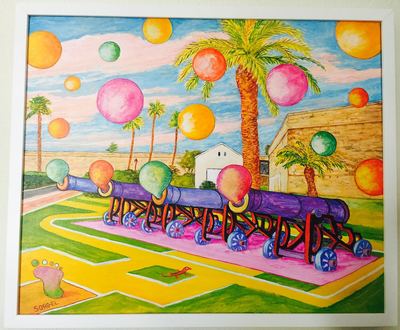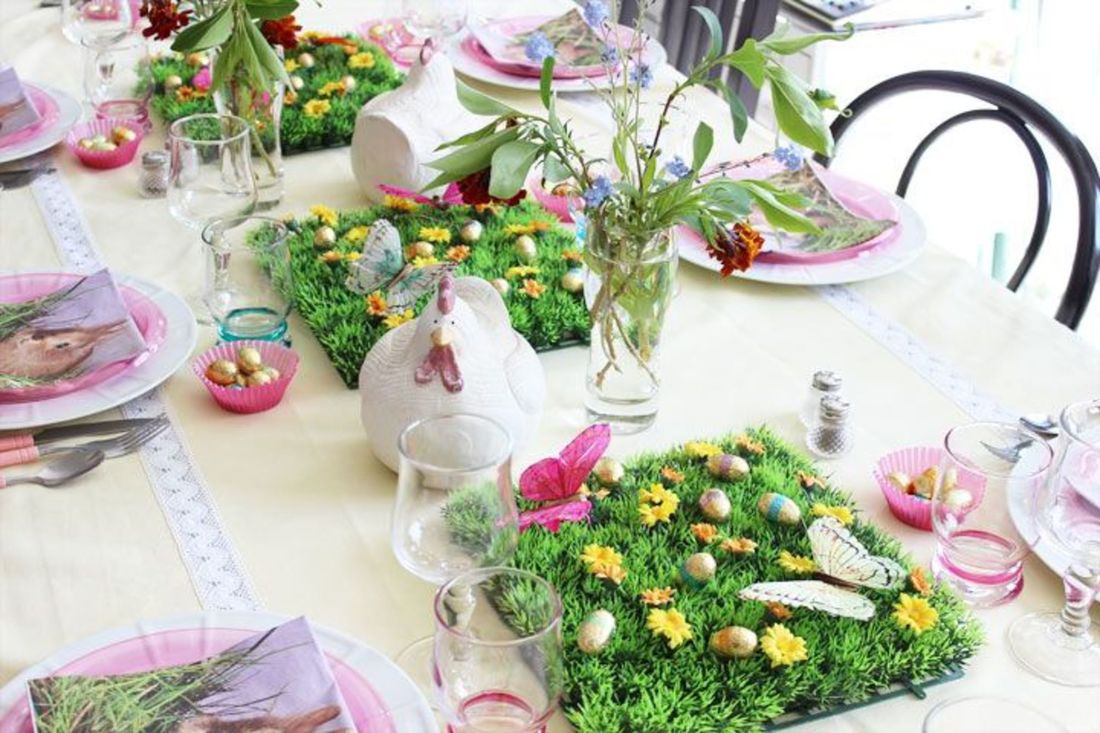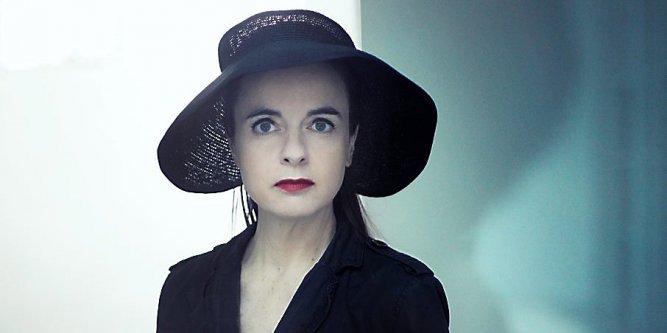|
The Bermuda International Film Festival will show the french film "Faces, places" by Agnes Verda and JR, Monday March 19th, 8pm- 9:30 at Earl Cameron Theatre, City Hall.
"Buche de Noel is the French name for a Christmas cake shaped like a log.
This is a traditional French dessert served after the main Christmas dinner, a roll of light sponge cake, covered in chocolate or coffee butter cream textured to resemble bark as an evocation of the ancient tradition of burning the Yule log. The origin of the tradition comes from the rather enormous and very dense log that was burned in the hearth as a part of traditional Christmas celebrations. It sometimes consisted of an entire tree trunk with one end burning inside the hearth while the rest of the trunk stuck out into the room. The log was specially selected for the occasion, originally to mark the winter solstice, and carried in the main room to provide maximum lasting and reassuring warmth. It must have been quite an event. Nowadays every French home will have its Bûche de Noël in the form of the traditional cake made from a Génoise or sponge cake, generally baked in a large, shallow pan, then rolled into a cylinder, frosted and decorated. Many variations of this cake are now available including some that are not cakes at all but made of sorbet, ice cream or elaborate confections and come in a multitude of flavor combinations. Ingredients for 12 servings
Directions:
On Sunday there was a Christmas Fair that I wanted to go to at the Steiner School, somewhere in the woods beyond Campagne; but after crossing the village I got lost, or rather I should say, I got found. What should have been a five minute trek became a twenty-five minute meandering through an unknown countryside, along a narrow road passing the occasional farm, fields dotted with cows, or overshadowed by tall trees. At first I drove hesitantly, expecting at every turn to see the old manor house surrounded by cars, children playing through the gardens. Once I realized that I had made a wrong turn I settled into the land, allowing myself to be pulled into the discovery and mystery of it all I was wearing my new moss-green sweater and the copper-coloured leaf pendant sent by the children over my heart. The day was glorious, brilliant sun over a wild yet subtly domesticated countryside, with colours that only manifest on the threshold of seasons; young, green grain quivering in the fields, sunlight shafting through the small woods to etch the trees dressed with the last golden leaves hanging like delicate Christmas ornaments. Around and around through the little woods I drove; now up, now down opening to sunlit fields where brown-spotted cows lay in the sun against a background of trees with leaves matching their own colour. All this lifted me up, made me sing out loud, “I love it, love it’, wanting the ride to last forever.
Thus I allowed myself to become lost in the labyrinth, pulled forward along the road, yet thoughts and eyes extended to all beyond. I saw not a soul and no vehicle passed. The autumn sun beat through the open window framing the painted countryside lying wide on either side, and warmed me. And so it happened…. Rounding a sharp corner the narrow road rose from the sunlit fields, straight up a steep hill towards a dense wood. Upon reaching the top the road dipped abruptly, plunging me into the midst of a cool, shadowy world through which not a glimmer of light shone. The road along which I was carried; for now I was no longer driving the car but somehow outside of it, outside of myself; this road had become a tunnel of trees beneath which ran a ribbon of luminous green moss. I was carried forward, the green of my sweater pulled into the green ribbon ahead of me, copper leaves falling from the trees to settle in my hair, upon my heart. Where am I? Who am I? This I know not, only that I have been here before. And a sound like a deep, soft sigh joins my own breath, then overtakes me to fly above the green ribbon, out of the tunnel into the autumn sunlight upon the brown hawk’s taught wings. Sandra Rouja Somewhere near Campagne, Ariege. December 2nd,2000. My birthday. Sandra's family members are dear friends of the Alliance Francaise des Bermudes and founding members of l'Alliance. Sandra is a talented poet, well known for her numerous poems in French, English and Portuguese. The Alliance Francaise will have the pleasure to hold an opening reception to welcome the French painter Sorgel who will present his work during a joint exhibition with Nicky Gurret.
The reception will take place on Friday, June 16th from 5.30pm at the Rick Faries Gallery, at Masterworks. Discover this interview of Sorgel by the journalist Laurène Daycard. A great opportunity to know a little bit more about this artist : Sorgel : « Je projette mon âme sur la toile» Sorgel est un peintre résidant au Pays Basque, dans le sud ouest de la France. Depuis plus de 40 ans, son œuvre dépeint un univers empreint d’onirisme et inspiré de l’héritage flamand d’un Bosh ou de Bruegle. Ses tableaux sont exposés entre l’Europe (Amsterdam, Paris) et les Etats-Unis (New York). Pour la première fois, il revient sur son parcours d’autodidacte, les inspirations nourrissant sa peinture et sa vision du statut d’artiste. Comment avez-vous découvert la peinture ? À 20 ans, j’ai pris ma guitare et je suis monté à Paris pour chanter. Un soir, j’ai été invité à dîner chez un sociologue. Sur les murs de son salon, il y avait un grand tableau, tout rose, avec un bonhomme en bas. Mon hôte me disait l’avoir obtenu pour 3000 francs. Pour l’époque, c’était une somme conséquente. Je lui ai dis : « je te fais le même pour moitié prix ! » Il s’est pris au jeu et on a conclu l’accord. Je me suis acheté une toile pour refaire la même chose. J’en ai été incapable. J’ai alors compris que ce n’est pas parce que ça a l’air simple que ça l’est. Derrière, il y a tout un travail. De retour chez lui, le sociologue m’a prêté l’ouvrage « L’art et l’âme » de René Huyghe. Il explique qu’être peintre, ce n’est pas que faire des commandes, c’est aussi se mettre à nu. On projette sa propre âme sur la toile. Vous n’aviez aucune formation artistique. Comment avez-vous appris? J’étais tellement avide de connaissances que je suis allé dans tous les musées de Paris, du plus incompréhensible au plus ancien. J’y ai découvert Dali. Plus que le trait, c’est son univers qui m’a plu. Mais aussi Magritte et Paul Gauguin. La vie sans concession de ce dernier m’a touchée. Rapidement, Paris ne m’a pas suffit et je suis allé voyager aux Pays-Bas. J’avais 22 ans et j’y ai vu pour la première fois le travail d’un Pieter Bruegel ou de Jerome Bosch. Je n’avais pas encore les capacités techniques pour faire comme eux mais je savais que c’était vers là que je voulais aller. Je dessinais encore au fusain, avant de repasser par dessus au feutre puis à la peinture à l’huile. Je me suis installé là-bas, dans le nord du pays. Je vivais complètement reclus pour apprendre la technique picturale dans les livres, couche par couche. Je n’avais pas d’argent, alors je coupais à la scie des étagères pour peindre dessus. Je n’ai jamais eu de modèle, j’invente tout, sans plan. La réalité ne m’a jamais satisfait. Je sais que ça va venir, à force de travail. Parlez-nous de la naissance de Sorgel. À l’époque des Pays-Bas, je peignais tout le temps, même en plein milieu de la nuit. J’écoutais du Léo Ferré pour m’accompagner. Une fois, à trois heures du matin, j’ai eu une éclaircie. J’ai peint un Diogène en plein milieu de la nuit marchant avec une bougie éteinte. Cela a été mon premier acte de Sorgel. Pourquoi ? Diogène est ce philosophe grec se promenant dans les rues avec une lumière pour chercher un homme. Je suis attiré par les contraires et j’ai donc éteint sa lumière. Symboliquement, je me suis trouvé en tant qu’artiste à ce moment-là. De cette théorie du contraire, j’en ai fait tout un système. Vous savez, je suis un autodidacte alors personne n’est là pour me contredire ! Quand je démarre un tableau et que je ne l’aime pas, je le retourne pour continuer. Et ainsi de suite jusqu’à ce que j’obtienne satisfaction. On ne retombe jamais sur le point de départ. Être à l’envers oblige mon cerveau à créer des choses qui n’existent pas. Parfois il y a des traits de génie mais c’est souvent beaucoup de travail. Un Sorgel grand cru nécessite en moyenne cinq années. Je ne suis pas pressé, j’ai toute la vie. Chacun de vos tableaux donne l’impression d’ouvrir une nouvelle fenêtre sur un seul et même monde. Oui, c’est exactement ça. Je ne peins pas de simples tableaux mais toute une œuvre. Il y a un fil rouge et des thèmes récurrents comme la musique, avec les guitares, les contrebasses. Mais aussi la navigation et les livres. Je ne m’occupe pas du fond, je n’ai pas de messages théoriques à faire passer. Face à mon œuvre, le spectateur y discerne d’ailleurs souvent des choses que je n’ai moi même pas observées. L’intuition guide mon pinceau. C’est un miroir de mon inconscient. Je ne cherche pas à comprendre, je laisse faire, pousser, germer tout ce qui va sortir. C’est une forme de liberté ? Avec la page blanche de l’écrivain, la toile reste le dernier espace libre que nous ayons sur cette planète. On a tout découvert, même le cosmos. Il n’y a plus d’explorateur, sauf dans la créativité. Cela correspond à un désir profond d’identité. Je ne peins pas pour vivre, je vis pour peintre. J’ai toujours eu un autre travail à côté. J’aime insister sur cette nuance parce que, chez beaucoup de peintre, c’est l’inverse. Résultat, ils se retrouvent à enchaîner les commandes et à se restreindre à cause des exigences des acheteurs. Je suis libre et c’est pour ça que ma peinture est si libre, folle et irrationnelle. http://sorgel.fr/ https://m.facebook.com/Sorgelart/  Pâques" is one of the most awaited holidays in the year in France. Many of the French Easter traditions directly relate back to the fact that much of the country considers itself Roman-Catholic. Easter is a major holiday celebrated by all, religious or not. 'Pâques' refers to Easter, but also to the spring vacation We also call them “vacances de printemps” and they differ according to 3 geographic Zones through France (the French system that staggers school holiday dates per region so that not all French people are on the roads at the same time). The “vacances de printemps” are 2 weeks long and fall between April 13 and May 13. No Good Friday but Easter Monday Good Friday is not a free day in most regions of France. The exception is the lucky residents of Alsace, the only French people who get to stay home this day. The reason for this is Alsace's rather complicated history of switching hands between Germany and France. Under German rule, the Alsatians had Good Friday off, and when they once again became French, they refused to give up this benefit. But, Easter Monday (the 17th) is a public holiday. Les cloches de Pâques "Flying Easter bells" The Catholic tradition dictates that Church bells don’t ring between Good Friday “Vendredi Saint” and Easter Sunday, to commemorate the death of Christ and his resurrection. The oral tradition then said that all church bells were in France sprout wings and fly down to the Vatican for a visit and to be blessed by the Pope. After their getaway to Italy, the bells return to France laden with goodies for well-behaved children — namely chocolate eggs. They randomly drop these treats for the great joy of children. La chasse aux oeufs 'Easter egg hunt" Traditionally, the bells fly back on Saturday night. So, Sunday morning is the opening of “la chasse aux oeufs” in France. Someone usually shouts “les cloches sont passées” and all the children run outside to collect chocolate or sugar eggs, hens, roosters, chicks, bunnies and lambs… and flying bells of course, all symbolic of Easter, spring and renewal. We hide the treats more or less well depending on the age of the children. Some easter egg hunts are organized by cities and other communities. The most famous and largest Easter egg hunt takes place in the gardens of the Chateaux Vaux le Vicomte just outside of Paris. Tens of thousands of eggs to be found by both kids and their parents! Traditional Easter meal : l'agneau pascal Food, of course, plays a large role in the many French holidays, and Easter is no exception! The table is usually very lively, with pots of daisies and other spring flowers, green and yellow colors prevail. Many people use Easter eggs to also decorate the table. People usually prepare lamb as a main course, traditionally a roasted leg. It goes wonderfully with green beans, or a mixture of all fresh vegetables from the garden. If the spring is late to come this year, a traditional dry bean to serve with lamb is flageolet beans. For Christians, Easter symbolizes Jesus’ passage from death to life, his sacrifice. Thus, Jesus is identified with the sacrificial lamb of the Jewish tradition. The lamb also symbolizes new life, as it happens in Spring time. For dessert, people will usually serve the first strawberries of the season that they will eat with chocolates in various shapes and colours and a nest shaped cake. Chocolate art France has some world-famous chocolatiers. Around Easter Easter, the chocolate shops are filled with magnificent chocolate creations. You can find beautifully detailed sculptures of eggs, fish, chickens, rabbits, and more. Very often these chocolates look more like exquisite works of art, and much like peering at a masterpiece. They're almost too beautiful too eat ! Cecile is a Franco-american, living in the US. She performs in France and USA in flawless english or french, with a voice as sweet as warm honey or as angry as can be depending on the song ! Many jazz artists consider her the new Sarah Vaughn and Billie Holiday rolled into one ! She is also a talented painter as can be seen on her website. http://www.cecilemclorinsalvant.com/ Amélie Nothomb is a well known author from Belgium, who has written novels such as Hygiène et l’assassin, Le Sabotage amoureux, and Métaphysique des tubes. A daughter of diplomats, Amélie spent her childhood living all over the world, including Japan. Her award winning novel, Stupeur et Tremblements, published in 1999, was based on her own experience moving back to Japan in her adulthood.
The Library Journal says Stupeur et Tremblements is a “charming and humorous tale of East meets West.” The novel is about a young Belgian woman who moves to Japan to be a translator at a prestigious company and discovers the difficulties of the corporate ladder. Amélie Nothomb is a hilarious and entertaining writer, so we suggest any one of her novels! Karim Ouellet is a Canadian pop singer-songwriter; his music is folk-pop, with reggae and African music influences. All these different influences blend into a unique and fun sound. Originally from Senegal, he was adopted by Canadian diplomats and lived in France, Rwanda and Tunisia before returning to Quebec City, Canada. His album Fox won the Juno Award for Francophone Album of the Year in 2014. He has toured around in Canada and France, and is particularly popular in Mexico. His catchy and calming melodies are irresistible. He explained in an Indie Music interview that his songs are “above all love stories,” even though they are not all true to life events. He wants to entertain and inspire people, “I try to make good songs that other people can love.” Héloïse Letissier, otherwise known as Christine and the Queens, is a French singer and songwriter from Nantes. She was inspired by drag queen musicians such as Russella, who took her in while she was in London after a devastating break up. She has described her genre as “freakpop”, with her music and lyrics questioning feminism, gender and queer culture. Christine and the Queens has slowly built up a following, and began to chart after the release of her third EP. She even has A-List fans such as Madonna, Mark Ronson and Lorde. She’s been awarded Best Female Artist in 2015, and was nominated for the IMPALA Album of the Year Award 2015 for her album “Chaleur Humaine”. Dazed says that her newest album “Chaleur Humaine” “combines fractured, glitch-ridden electro-pop production with Letissier’s distinctively fluid, ice-clear voice.” We can't stop listening to her fantastic album, and her music videos are just as amazing with their fluid and contemporary choreography. Take a look at her video for her single "Christine"! |
SuggestionsIf you would like to send in your suggestions (favourite recipes, authors, musicians, etc), email us here Archives
May 2019
Categories |















 RSS Feed
RSS Feed